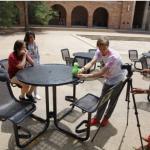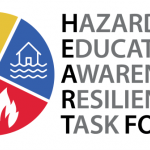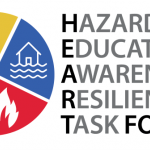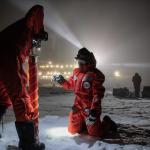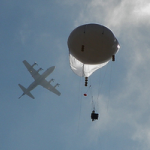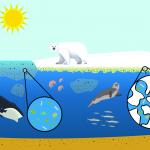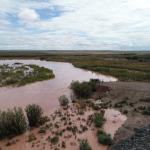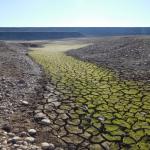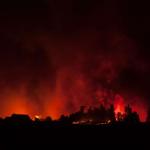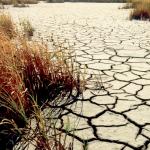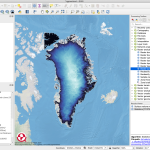Lesson Plans & Activities
Sharing Science with Film: A Guide to Student Productions
The examples and lesson plans provided in the educator guide emphasize scientific film topics; however, the methods shared throughout Sharing Science With Film: A Guide to Student Productions are applicable to films around all topics and genres.
Sharing Science With Film: A Guide to Student Productions is a guide for educators, and provides a how-to manual for instructing youth on how to produce short films.
Unit
Filmmaking
Middle School
High School
Informal Audience

Community Resilience Expo Overview
The Expo is best taught at the end of HEART Force unit, after students are familiar with the hazard.
The Community Resilience Expo is a culminating event for the HEART Force curriculum, where students will develop and present original ideas to increase resilience in their community.
Unit
Colorado-Based
Middle School
High School

HEART Force Curriculum Overview
This unit consists of several lessons and can take anywhere from 1 to 6 weeks to teach, depending on which lesson teacher choose to incorporate.
The HEART Force curriculum builds understanding of wildfire, flood, or drought in the context of place-based community resilience.
Unit
Colorado-Based
Middle School
High School

Exploring the New and Old Arctic
This unit consists of 6 lessons, each tied to NGSS nature of science understandings
In this MS/HS unit, students compare and contrast Arctic expeditions of the past (1893-1896 Fram expedition) and the present (2019-2020 MOSAiC expedition) to prepare for the Arctic of the future.Unit
Nature of science, Polar Science
Middle School
High School
Arctic Feedbacks: Not All Warming Is Equal
This storyline unit consists of 10 lessons, each tied to NGSS Earth's systems standards
In this MS/HS unit, students engage with 360° virtual reality tours, authentic Arctic datasets, and app-based labs to construct models and explanations for the unit driving question, "Why might the Arctic be warming twice as fast as the rest of the world?"Unit
Polar Science
Middle School
High School
DISCOVER-AQ Curriculum Overview
The four DISCOVER-AQ modules can be completed independently, sequentially, or extended into a larger unit of study.
The DISCOVER-AQ curriculum integrates real-word research with real-life learning to answer the question: What are the causes and effects of air quality issues and how do they affect human health and the environment?
Unit
Middle School

Solar Dynamics Observatory (SDO) Curriculum Overview
The SDO curriculum consists of four lessons/modules and takes 4-6 weeks to teach.
The SDO curriculum teaches students through self-directed solar explorations and encourages them to be engaged learners in order to understand the science of our Sun and to apply the knowledge they gain to solve tomorrow’s solar situations.
Unit
Middle School

The Future of Forests
This storyline unit consists of 9 lessons, each tied to NGSS life science standards
In this middle school unit supported by NASA, students engage with online interactives, authentic datasets, and citizen science protocols to construct models and explanations for the unit driving question, "How do landscapes recover after a wildfire?"Unit
Middle School
High School
A Changing Arctic Ecosystem
This storyline unit consists of 8 lessons, each tied to NGSS life science standards
The Arctic is warming more rapidly than anywhere else on Earth. One consequence of a warming Arctic is a dramatic decline in sea ice, an important habitat for many Arctic plants and animals. In this unit students will engage with 360° virtual reality tours, hands-on labs, and authentic Arctic datasets as they gather evidence to construct explanatory models for the unit driving question, "How might the decline in sea ice affect Arctic organisms large and small?"Unit
Polar Science
Middle School
High School
Geomagnetism Challenge
This lesson is centered around a data challenge using the CrowdMag application. The challenge includes live webinars, asynchronous videos, lesson plans, and the chance to win a raffle! The lessons and asynchronous videos can be used as stand-alone resources.
Individuals and classrooms are invited to join the GeoMag Data Challenge! Explore the power of community/citizen science, Earth's magnetic field, and data collection with us.Unit
Middle School
High School
Informal Audience

Middle School Wildfire Unit
This HEART Force curricular unit includes all lessons for the Middle School Wildfire curriculum.
The HEART Force curriculum builds an understanding of wildfire, flood, or drought in the context of place-based community resilience.Unit
Middle School

Middle School Flood Unit
This HEART Force curricular unit includes all lessons for the Middle School Flood curriculum.
The HEART Force curriculum builds an understanding of wildfire, flood, or drought in the context of place-based community resilience.Unit
Middle School

Middle School Drought Unit
This HEART Force curricular unit includes all lessons for the Middle School Drought curriculum.
The HEART Force curriculum builds an understanding of wildfire, flood, or drought in the context of place-based community resilience.Unit
Middle School

High School Wildfire Unit
This HEART Force curricular unit includes all lessons for the High School Wildfire curriculum.
The HEART Force Curriculum builds an understanding of wildfire, flood, or drought in the context of place-based community resilience.Unit
High School

High School Flood Unit
This HEART Force curricular unit includes all lessons for the High School Flood curriculum.
The HEART Force curriculum builds an understanding of wildfire, flood, or drought in the context of place-based community resilience.Unit
High School

High School Drought Unit
This HEART Force curricular unit includes all lessons for the High School Drought curriculum.
The HEART Force curriculum builds an understanding of fire, flood, or drought in the context of place-based community resilience.Unit
High School

From Greenland to our Coasts: Exploring Sea Level Change with QGreenland
This unit consists of 3 lessons, each tied to NGSS life science standards
In this unit, students will explore how the Greenland Ice Sheet is changing and why that affects coastal communities worldwide. Students will view authentic Greenland geospatial data and learn how to create flood maps to assess local risk in QGIS.Unit
High School
Informal Audience

Lake County Cascading Hazards Unit
The unit has four lessons in total.
This unit builds an understanding of five natural hazards and their connections in the context of place-based community resilience.Unit
Middle School
High School
